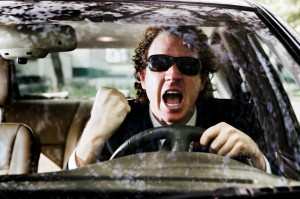- HOME
- PSYCHOLOGICAL SERVICES
- ONLINE COURSES
- Our Partnership Begins When You Purchase an Online Course
- Get to Know Dr. D’Arienzo, Relationship Expert
- Florida Premarital Preparation Online Course
- Georgia Premarital Education Online Course
- TwogetherinTexas Premarital Online Course
- Tennessee Premarital Preparation Online Course
- Minnesota Premarital Education Course Online
- Oklahoma Premarital Counseling Online Course
- South Carolina Premarital Preparation Course
- West Virginia Premarital Education Course
- Online Marriage and Relationship Tune Up Course
- Florida DCF Certified Parent Education and Family Stabilization Online Course
- Georgia Qualified Parent Education and Family Stabilization Online Course
- Texas Qualified Parent Education and Family Stabilization Online Course
- High Conflict Co-Parenting Online Certificate Course (8 Hours)
- Online Anger Management Four Hour Course (Level 1)
- Online Anger Management Eight Hour Course (Level 2)
- Sexual Harassment Online Training
- BUSINESS & PERFORMANCE PSYCHOLOGY
- CLINICAL, COUPLES, & FAMILIES
- ADHD Treatment & Evaluation Services
- Anger Management
- Anxiety Treatment & Evaluation Services
- Borderline Personality Treatment Services
- Cognitive Behavioral Therapy (CBT) Self-Help
- Couples Counseling and Marital Therapy
- Consent for Psychological Services for Minors Post-Divorce
- Depression Treatment Services
- Infidelity Recovery
- Jacksonville Counseling and Psychology
- Military Psychology & Tricare
- Narcissistic Personality Treatment Services
- Online Counseling
- Psychoeducational Testing
- Psychological Testing and Assessment
- Psychotherapy & Counseling
- FORENSIC PSYCHOLOGY & EXPERT TESTIMONY
- LIFE COACHING & EXECUTIVE COACHING
- MMPI TESTING & ASSESSMENT FOR SECURITY AND LEO
- CPI Police and Public Safety Assessment
- G License Psychological Testing
- Online Psychological Testing for Armed Security Guards and Personal Protection Officers
- MMPI Texas Level III CSO and IV PPO Psychological (ONLINE)
- Requirement for Texas Security License Applicants: MMPI Evaluation
- Level 3 Security Guard New Mexico Online MMPI Psychological Evaluation
- PSYCHOLOGICAL PUBLIC DISABILITY QUESTIONNAIRES (DBQ)
- ONLINE COURSES
- TEAM
- D’Arienzo Psychological Group Overview
- Dr. Justin D’Arienzo, Psy.D., ABPP
- Mario Decunto, LMHC
- Dr. Amy Hartley, Ph.D.
- Dr. Erica Janson, Psy.D.
- Alan Lipzin, LMHC
- Cynthia Salameh, Esquire
- Wendy Monger, Tutoring Specialist and Academic Coach
- Dr. Michael Nackashi, Psy.D., Clinical Psychologist
- Joseph Zichi, LCSW
- Mack, Roman and Roxy D’Arienzo
- MERCH & SOCIAL MEDIA
- BOOKS
- APPT REQUEST
Anger Management in Jacksonville, Florida
Anger Management in Jacksonville, Florida. Get help today. Keep reading if you or your loved one may have anger issues that need to be addressed!
We are Jacksonville Florida’s Leading Provider of Anger Management in Online, Group, Class and Face to Face Formats. Call us today if you need court ordered anger management or your place of employment or your spouse has recommended or referred you to participate in anger management. Our courses are fast, efficient, and informative. We invite you to contact us today at 904-379-8094.
We offer individualized treatment for anger management and will be offering group treatment for anger management in the future. Please contact our office at 904-379-8094 if you are interested in anger management services.
We offer help for disruptive physicians, disruptive employees, disruptive lawyers, and for other disruptive professionals. We provide emergent on-site interventions and consultations for your most difficult employees. Flexible treatment plans are available at our Jacksonville, Florida office based on your specific needs. We are available to assist you and your employees. Call us today!
Online Anger Management Four Hour Course
Online Anger Management Eight Hour Course
Jacksonville Florida’s Leading Provider of Anger Management
Get Out of My Way, You Jerk!
Researchers Study ‘Sidewalk Rage,’ Seeking Insights on Anger’s Origins and Coping Techniques
You don’t need a car to get road rage.
For many people, few things are more infuriating than slow walkers—those seemingly inconsiderate people who clog up sidewalks, grocery aisles and airport hallways while others fume behind them.
Researchers say the concept of “sidewalk rage” is real. One scientist has even developed a Pedestrian Aggressiveness Syndrome Scale to map out how people express their fury. At its most extreme, sidewalk rage can signal a psychiatric condition known as “intermittent explosive disorder,” researchers say. On Facebook, there’s a group called “I Secretly Want to Punch Slow Walking People in the Back of the Head” that boasts nearly 15,000 members.
On sidewalks across America, slow-paced foot shufflers, window gawkers and photo snappers are causing fellow pedestrians to lose their cool. We ask some New Yorkers what pushes their buttons — at least the ones who stopped long enough to talk to us. WSJ’s Shirley Wang reports.
Some researchers are even studying the dynamics that trigger such rage and why some people remain calm in hopes of improving anger-management treatments and gaining insights into how emotions influence decision making, attention and self control.
“We’re trying to understand what makes people angry, what that experience is like,” says Jerry Deffenbacher, a professor at Colorado State University who studies anger and road rage. “For those for whom anger is a personal problem, we’re trying to develop and evaluate ways of helping them.”
Signs of a sidewalk rager include muttering or bumping into others; uncaringly hogging a walking lane; and acting in a hostile manner by staring, giving a “mean face” or approaching others too closely, says Leon James, a psychology professor at the University of Hawaii who studies pedestrian and driver aggression.
For the cool-headed, sidewalk rage may seem incomprehensible. After all, it seems simple enough to just go around the slow individual. Why then are some people, even those who greet other obstacles with equanimity, so infuriated by unhurried fellow pedestrians?
How one interprets the situation is key, researchers say. Ragers tend to have a strong sense of how other people should behave. Their code: Slower people keep to the right. Step aside to take a picture. And the left side of an escalator should be, of course, kept free for anyone wanting to walk up.
A crowded street in San Francisco. Are these people angry? Getty Images
Pedestrian Aggressiveness Syndrome
A University of Hawaii researcher says it manifests itself in these traits
- Having denigrating thoughts about other pedestrians
- Walking by a slower moving pedestrian andcutting back too soon (feels hostile or rude)
- Feeling competitive with other pedestrians
- Acting in a hostile manner (staring, presenting a mean face, moving faster or closer than expected)
- Feeling stress and impatience when walking in a crowded area (crosswalk, staircase, mall, store, airport, street, beach, park, etc.)
- Walking much faster than the rest of the people
- Not yielding when it’s the polite thing to do
- Walking on the left of a crowded passageway where most pedestrians walk on the right
- Muttering at other pedestrians
- Bumping into others
- Not apologizing when expected (after bumping by accident or coming very close in attempting to pass)
- Making insulting gestures
- Hogging or blocking the passageway, acting uncaring or unaware
- Expressing pedestrian rage against a driver(like insulting or throwing something)
- Feeling enraged at other pedestrians and enjoying thoughts of violence
“A lot of us have ‘shoulds’ in our head,” says Dr. Deffenbacher. Ragers tend to think people should do things their way, and get angry because the slow walkers are breaking the rules of civility. It’s unclear exactly why some people harbor such beliefs, Dr. Deffenbacher says. Such ways of thinking are generally learned from family, friends or the media, he adds.
Ragers’ thoughts tend to be overly negative, over-generalized and blown out of proportion, leaving them fuming about how they can’t stand the situation, how late they are going to be, and how this always comes up, Dr. Deffenbacher says. In contrast, someone blissfully free of sidewalk rage may still be frustrated, but thinks more accepting thoughts such as, “this is the way life is sometimes” or, “I wish that slow person wasn’t in front of me,” he says.
Some ragers say that thinking insulting thoughts about other pedestrians serves as “mental venting”—and makes them feel better. Even if it does provide some momentary relief, such thinking rehearses bad behavior and can make anger a more automatic reaction to these situations, says Dr. James.
“When you’re emotionally upset, you’re impaired,” says Dr. James.
He should know. He used to be a very aggressive walker as he vied with swarms of tourists for space on the crowded streets of Honolulu, he says. He would square his shoulders and walk straight ahead, bumping into people and thinking it was his right; he was the one walking properly.
But his wife repeatedly called him an aggressive walker, he says. Finally, she convinced him. Now he tries to walk around people rather than into them, he says. And he says he feels guilty when he does succumb to the urge to barge through.
Psychologists say that the best thing for a rager to do is to calm down. Anger, after all, is associated with a host of negative health consequences, including heart problems and high blood pressure.
But calming down isn’t always easy. Those at the extreme end of the rage continuum, sidewalk or otherwise, may have intermittent explosive disorder, a condition characterized by an inability to inhibit aggressive impulses that lead to assault or destruction of property, according to the Diagnostic and Statistical Manual of Mental Disorders, psychiatry’s bible of diagnoses.
If friends or family comment on your anger, or you think you need to tell someone how to walk—however politely—you may have a problem, says Dr. James, who devised the Pedestrian Aggressiveness Syndrome Scale. It outlines 15 bad pedestrian behaviors featured in Dr. James’s research based on questionnaires and interviews. Although the scale hasn’t been statistically verified, he says anyone who engages in one of these behaviors regularly may give in to the others as well.
Many anger-management treatments haven’t been studied thoroughly enough to show whether they work. One type shown to be effective, cognitive-behavioral therapy, seeks to alter thoughts and actions by coming up with alternative ways to view a situation.
All The Rage
The average speed of walkers in Lower Manhattan is 4.27 feet per second. Other speeds:
1. Tourists walk 3.79 feet per second; 2. Smokers: 4.17 feet per second; 3. Cellphone users: 4.20 feet per second; 4. Headphone listeners: 4.64 feet per second; 5. Large pedestrians: 3.74 feet per second; 6. Men: 4.42 feet per second; 7. Women: 4.10 feet per second; 8. People with bags: 4.27 feet per second;
—By Sarah Nassauer
Source: ‘Pedestrian Level of Service Study, Phase I’ from The City of New York and NYC Department of City Planning, April 2006. Observed: 8,978 pedestrians at various sidewalk locations in Lower Manhattan over about four weeks.; Wildlife Conservation Society
For instance, instead of thinking about how much of an idiot the pedestrian is and how he shouldn’t be allowed on the sidewalk, imagine the person is lost or confused, or simply doesn’t see you, says Eric Dahlen, a psychology professor at the University of Southern Mississippi in Hattiesburg who researches anger, aggression and traffic psychology.
Developing strategies to quell the rage may be wise: Sidewalks aren’t getting any less crowded, and pedestrian speeds, research shows, are slipping as the population ages.
In addition, most people on a sidewalk are in groups, and they tend to walk side-by-side or in an outward-opening V-shape, impeding the flow of foot traffic, according to an article published recently in PLoS One, a Public Library of Science journal.
People slow down when distracted by other activities, too. A 2006 study by the City of New York and the NYC Department of City Planning showed smokers walk 2.3% slower than the average walker’s 4.27 feet per second. Tourists creep along at an 11% more-leisurely rate than the average walker, while cellphone talkers walk 1.6% slower, according to the study. Headphone wearers, by contrast, clipped along at a 9% faster rate than average.
A series of studies by the University of Illinois at Urbana-Champaign using a virtual-reality simulator found that walkers consistently slow down when they talk on their phones, and that kids and older adults are more likely to get hit by cars while on the phone compared with those who weren’t on the phone.
So, how best to navigate around speed-challenged strollers?
Most people tend to look down as they walk. That’s a mistake, says Mehdi Moussaid, a cognitive scientist at the University of Toulouse who models walkers’ behavior on public sidewalks and was an author of the PLoS One study. Some of his advice: Look up and take a wide-angle view to catch openings and slip through.
—Sarah Nassauer contributed to this article
D’Arienzo Psychological Group provides Online Anger Management to the following states in the United States:
ALABAMA AL
ALASKA AK
ARIZONA AZ
ARKANSAS AR
CALIFORNIA CA
COLORADO CO
CONNECTICUT CT
DELAWARE DE
DISTRICT OF COLUMBIA DC
FLORIDA FL
GEORGIA GA
HAWAII HI
IDAHO ID
ILLINOIS IL INDIANA IN
IOWA IA
KANSAS KS
KENTUCKY KY
LOUISIANA LA
MAINE ME
MARYLAND MD
MASSACHUSETTS MA
MICHIGAN MI
MINNESOTA MN
MISSISSIPPI MS
MISSOURI MO
MONTANA MT
NEBRASKA NE
NEVADA NV
NEW HAMPSHIRE NH
NEW JERSEY NJ
NEW MEXICO NM
NEW YORK NY
NORTH CAROLINA NC
NORTH DAKOTA ND
OHIO OH
OKLAHOMA OK
OREGON OR
PENNSYLVANIA PA
RHODE ISLAND RI
SOUTH CAROLINA SC
SOUTH DAKOTA SD
TENNESSEE TN
TEXAS TX
UTAH UT
VERMONT VT
VIRGINIA VA
WASHINGTON WA
WEST VIRGINIA WV
WISCONSIN WI
WYOMING WY
Online Anger Management is also offered to residents in Canada, England, Ireland, New Zealand, and Australia.










